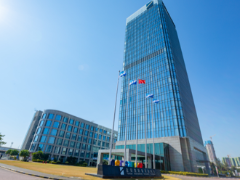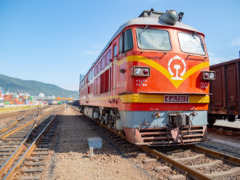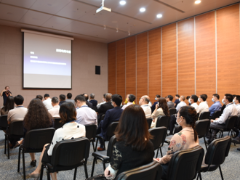YANTIAN Welcomes the World's First LNG-powered 23,000-TEU Container Vessel
A
A
A
缩小
加大
更大
On 6 October 2020, the world's first LNG-powered container vessel “CMA CGM JACQUES SAADE” made its inaugural call to YANTIAN. Measuring 400 meters long and 61.3 meters wide, the vessel can carry 23,112 TEU. It is the first of the nine mega-vessels of the same type in CMA CGM’s fleet.
“CMA CGM JACQUES SAADE” will serve the Asia-Europe route, following a port rotation of Tianjin New Harbour, Busan, Ningbo, Shanghai, Yantian, Singapore, Suez Canal, Southampton, Dunkirk, Hamburg, Rotterdam, Southampton, Algeciras, Suez Canal, Port Klang and Tianjin New Harbour.
This marked the the first time in the history of shipping that a mega-vessel is equipped with LNG-powered engines. LNG can reduce sulphur dioxide and fine particulate emissions by up to 99% and NOx emissions by up to 85%. Compared to regular fuel-powered alternatives, LNG can reduce CO2 emissions by up to 20%. All the nine vessels of the same type under CMA CGM’s vessel fleet carry the logo of "LNG Powered", which is easily identified in all seas around the globe.
On 7 October, delegation from CMA CGM visited YANTIAN to witness the maiden voyage of the new vessel with the YANTIAN team.
As the preferred port-of-call for mega vessels in South China, YANTIAN capitalizes is natural deep-water conditions, advanced terminal facilities and outstanding operational capabilities to deliver service excellence for mega vessels. At the same time, YANTIAN has consistently adhered to the goal of establishing a green port with initiatives such as the deployment of e-RTGCs, LNG tractors and application of shore power, which helped reduce energy consumption and carbon emissions per container by more than 30% and 20% respectively in the past 10 years.










